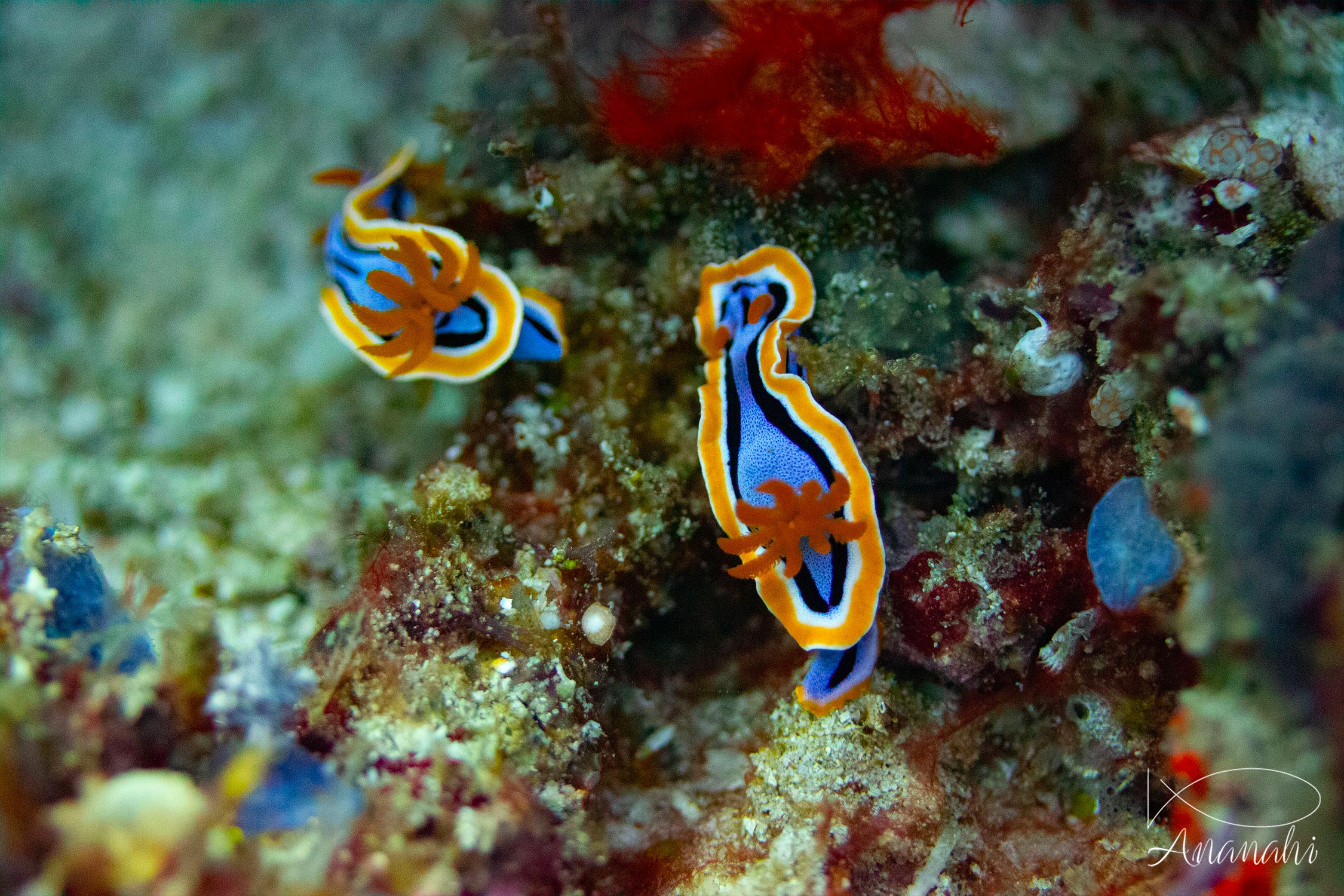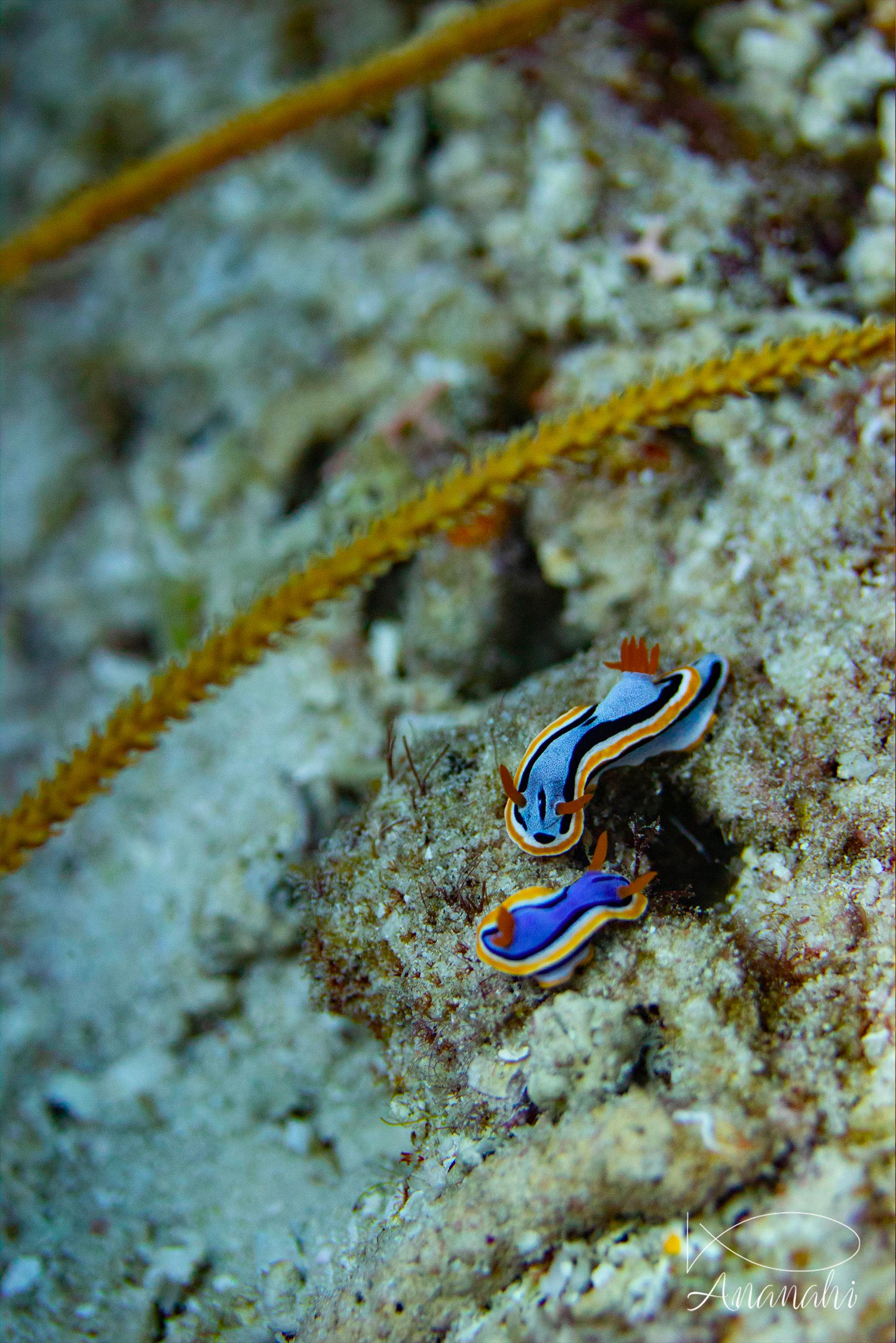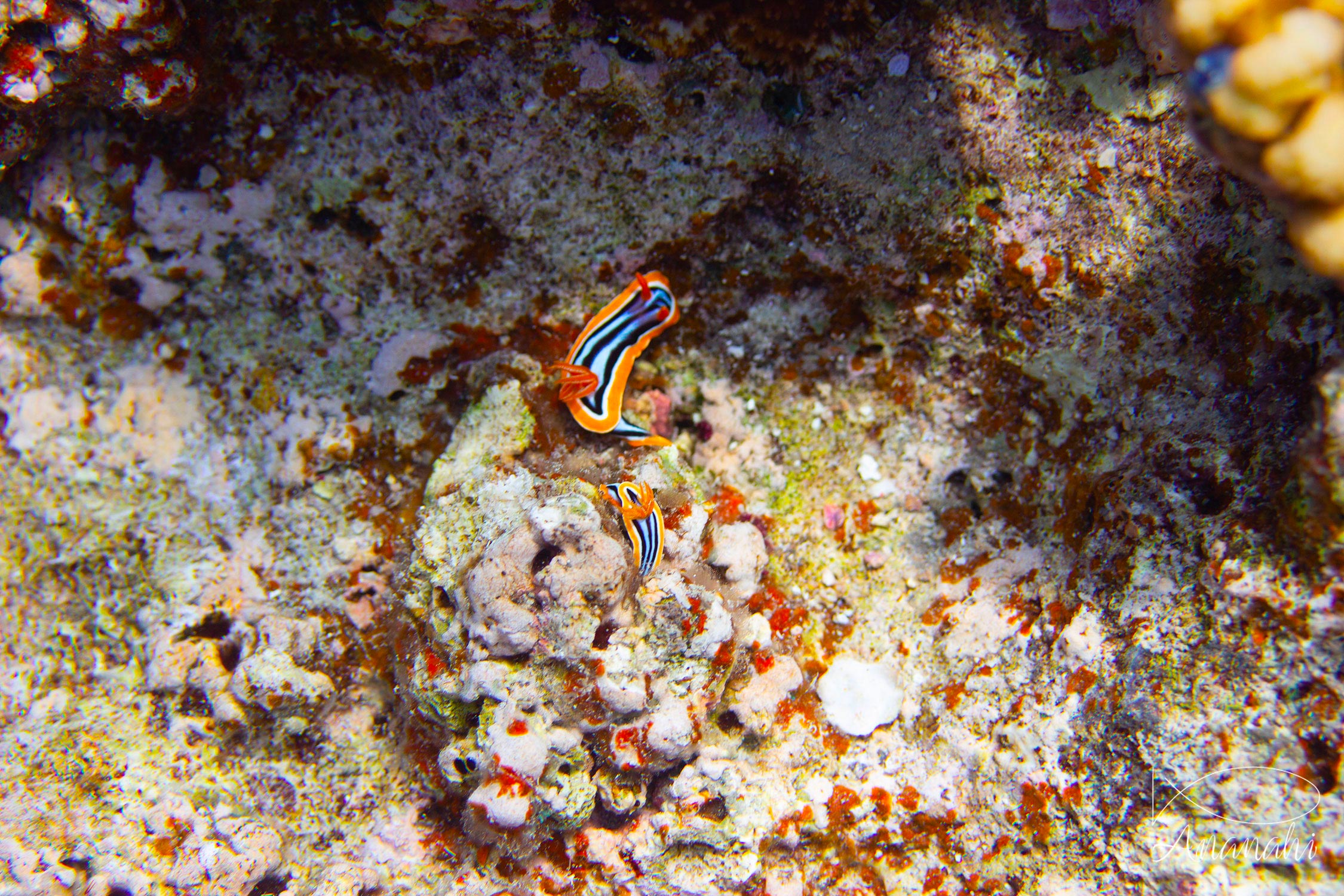
Scientific name: Chromodoris annae
Size: About 2 inches
Color: Orange, white, black and blue
Distinguishing feature: A black line separates its rhinophores (antennae), which distinguishes it from other similar species
Where did we see it: Raja Ampat

Scientific name: Chromodoris annae
Size: About 2 inches
Color: Orange, white, black and blue
Distinguishing feature: A black line separates its rhinophores (antennae), which distinguishes it from other similar species
Where did we see it: Raja Ampat
This beautiful nudibranch can be confused with a few species that are very similar to it.
It's a beautiful specimen that is crossed less often than other nudibranchs, especially because it is diurnal.
This species feeds on sponges, it moves to see, not afraid to be spotted by the presence of defensive glands on its body.






















Some sharks can stay motionless on the sand (white tips reef sharks, nurse sharks, etc.).
These sharks don't have to swim to bring oxygen to their gills like other sharks (grey, hammerheads tc.)
Parrotfish create a protective envelope around them when they are sleeping.
So, don't put the light on them during night dive to don't to wake them up and break this envelope.
The whale shark is the largest fish in the world!
Some whales are larger, but they are mammals, not fish!